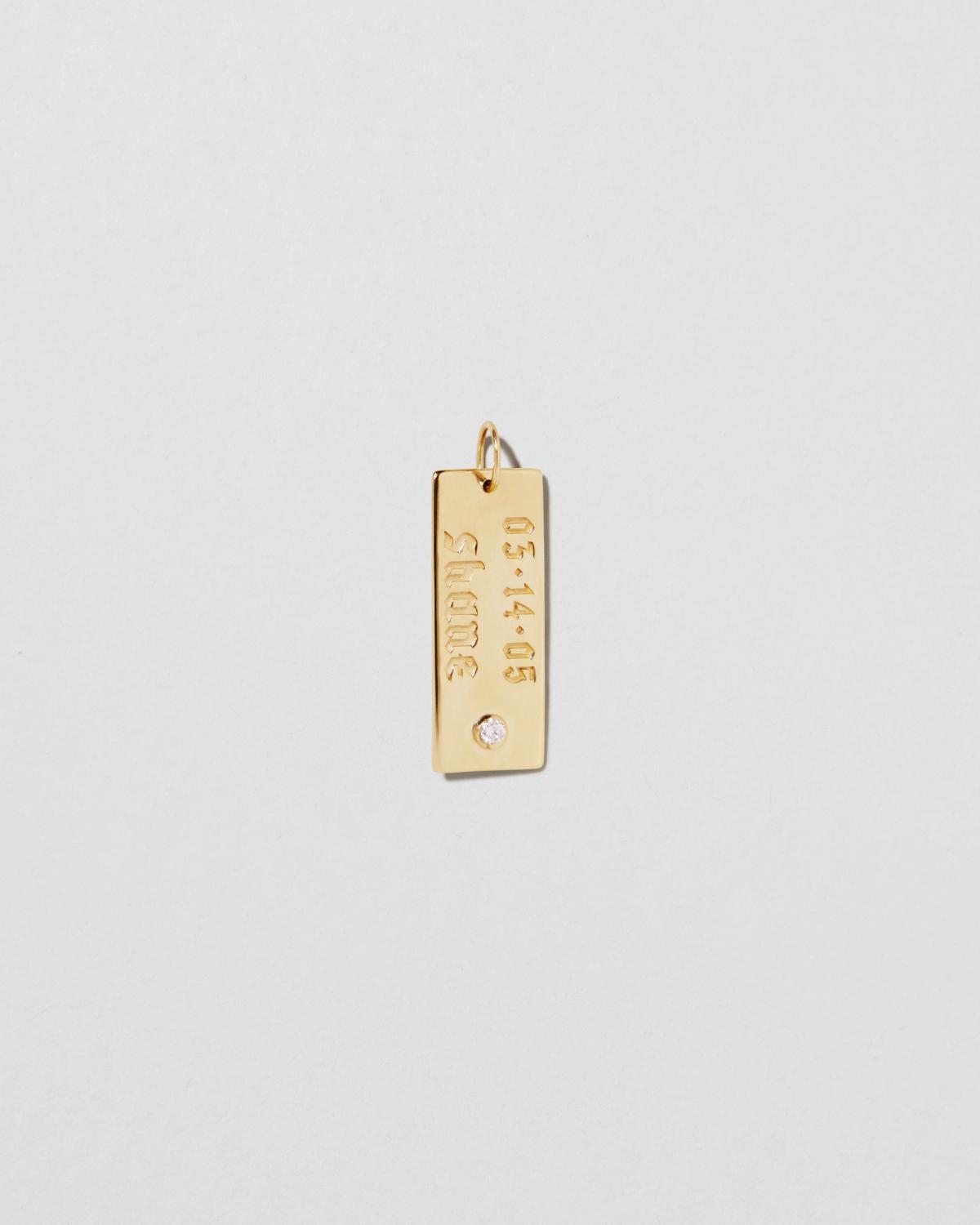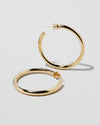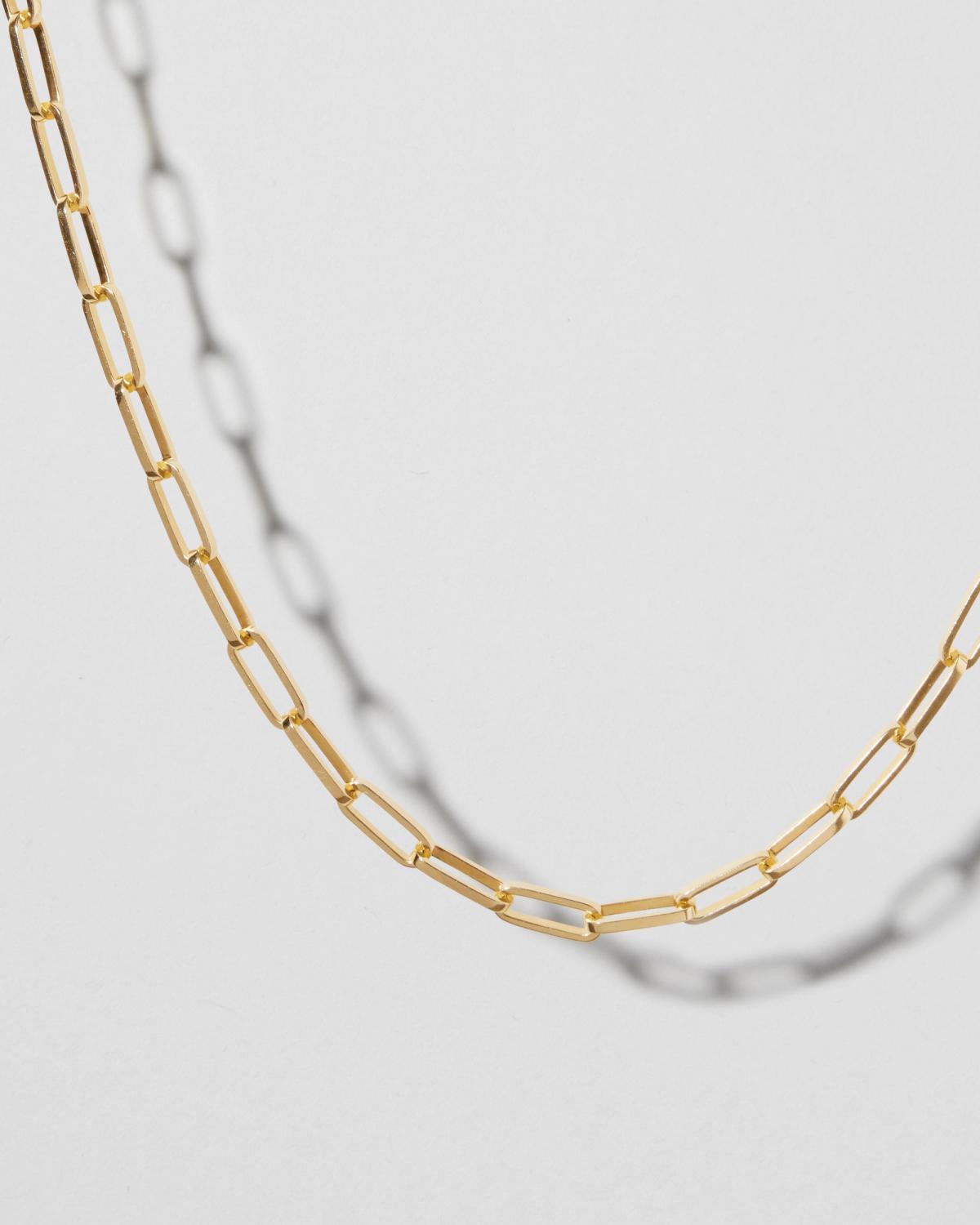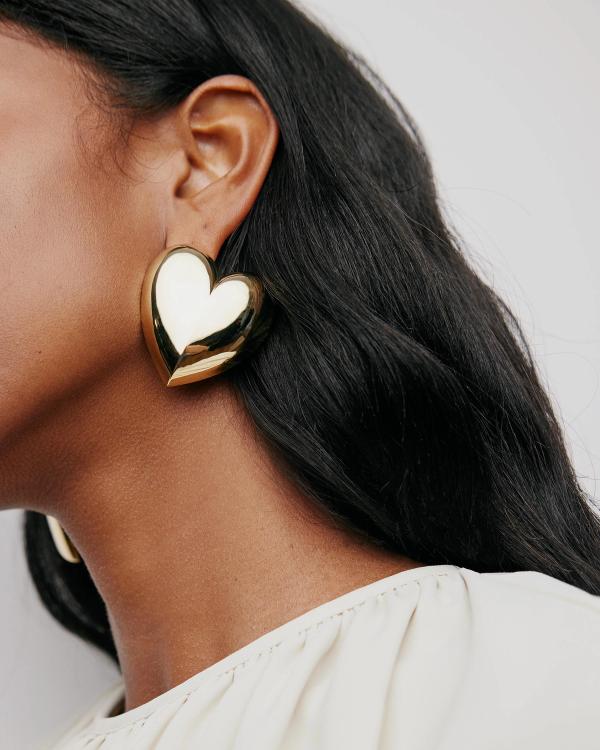What is 14K Gold Jewelry?
Dive into the world of gold jewelry to understand the allure of luxury, helping you make the right choice for your style.

What is Jewelry 14K Gold?
Metal jewelry has been a mainstay of fashion for thousands of years. In fact, some of the world’s oldest gold pieces date back to ancient Egypt, and people across the world have been dazzled by lustrous ores since the fourth millennium BCE.
But gold has come a long way—so much so that the jewelers and collectors of today use sophisticated methods to determine the weight and concentration of precious metals. Some terminology can leave newcomers to the jewelry scene scratching their heads. So, what is a karat?
In this guide, we’re demystifying the karat conversation (including carat vs. karat). We’ll touch on the role of brass in today’s jewelry-making, introduce some of the basics of gold jewelry, explain alloys in detail, and explore some of the most important considerations for jewelers and collectors when choosing an alloy.
The Role of Brass in Jewelry-Making
Let’s start with a look at modern jewelry and touch on another metal commonly found in today’s pieces: brass.
Solid vs. Plated Gold
One of the most important distinctions to make when choosing a piece of jewelry is whether it’s solid or plated:
- Solid jewelry is made from a solid alloy—it’s not hollow or coated in another metal.
- Plated jewelry is typically made from a base metal with a layer of
afiner metal on top.
For example, a ring made from plated 10k gold would feature two layers:
- A core made from another alloy (in many cases, brass)
- A coating made from 10k gold
Jewelers don’t always use brass as a core in plated jewelry, but it’s very common.
Why Brass?
Brass is a popular choice for plated jewelry for a few reasons:
- It’s durable – Brass is an alloy; it’s made from a combination of copper and zinc. These two metals make for a durable combination that wears well and can withstand the elements.
- It’s aesthetically compatible – Since it can be lustrous when polished and shares gold’s warm tone, brass is an aesthetically advantageous base for plated gold pieces.
- It’s affordable – Brass is a relatively accessible and cost-effective metal. For collectors and jewelers looking for the perfect balance between durability, aesthetics, and price, brass fits the bill.
Historically speaking, brass has played a role in jewelry-making for more than 1,000 years. Scientists and artists began experimenting with electroplating, fire gilding, and water gilding in the 1800s, and methods for coating brass with gold have only improved since.

An Introduction to Gold Jewelry
Whether you’re interested in adding plated or solid gold pieces to your collection, an understanding of gold’s physical properties and historical significance can help you make the most informed jewelry purchases.
Characteristics and Properties
Relatively speaking, gold is a soft metal; it’s highly malleable and bends easily. What does that mean for jewelry makers and collectors?
- Gold alloys are preferable for durability – While solid, pure gold is soft, adding harder metals like silver and copper can help pieces withstand the test of time without sacrificing luster or color.
- Gold is easy to manipulate – Since it’s soft, gold is highly workable, making it an excellent choice for fine jewelry designers crafting unique and highly detailed silhouettes.
Additionally, pure gold is very bright and has a vibrant yellow hue. So, jewelers often blend pure gold with other metals to mute the bright yellow tone to create a more subtle composition—especially one that pairs well with any set gemstones.
Historical Significance and Symbolism
Gold has been held in high regard for millennia. In fact, it’s been used throughout history for:
- Jewelry
- Royal adornments (e.g., crowns, collars, and scepters)
- Currency
- Religious artifacts
- A material for sculpture and other arts
Gold’s most salient symbolic characteristic is perhaps its durability—gold doesn’t corrode or rust. While it’s malleable and easy to work with, its indestructibility has permeated its use across media from jewelry to holy symbols.
Alloys Explained: Karats and More
With gold’s physical and symbolic properties in mind, let’s get into the nitty-gritty of gold in jewelry making—what should buyers look for in their next gold piece?
Carat vs. Karat: What’s the Difference?
First, what are carats? What are karats? These terms, while sometimes used interchangeably, are very different measurements:
- Carats refer to the diamonds weight and other gestones. One carat is equivalent to 200 milligrams (or 0.007 ounces). Total carat weight, on the other hand, encompasses the combined gemstone weight in a piece of jewelry.
- Karats describe the purity of gold. So, 14k gold has more pure gold by weight than 10k gold, for instance.
Jewelers (and other metalworkers) calculate gold karats by:
- Multiplying the weight of gold in an item by 24
- Dividing that figure by the total weight of the item
The higher the karat value, the higher the concentration of gold is in a piece.
Parts vs. Percentages
It’s much easier to understand karats in terms of parts and percentages. One gold karat equals 1/24 of the entire weight of an object. So, a 10k gold pendant is 10 parts pure gold, and 14 parts other compounds (e.g., other metals or impurities).
At Jennifer Fisher, our plated pieces are made with:
- 10k yellow gold
- 14k yellow gold
- 14k rose gold
- Silver with rhodium
$1,950.00


$2,100.00


Price Considerations
Price is one of the most critical considerations for jewelers and collectors alike when it comes to choosing a metal:
- Higher karat equals higher cost – As you might imagine, gold increases in price as it increases in purity.
- Higher karat doesn’t equal higher durability – Since pure gold isn’t as durable as gold alloys, jewelers often find a happy medium between durability and purity to deliver collectors the best value for their pieces.
In addition, solid (sometimes called “fine”) jewelry pieces are typically more expensive than their plated counterparts for one simple reason: there’s more pure precious metal by weight in a solid piece than there is in a plated piece.
However, even if you’re on a budget, you can still find durable, fairly priced-plated pieces. With the right care and maintenance, plated pieces can last as long as their solid counterparts.

Aesthetics
Jewelers and jewelry lovers alike also often choose a metal purity based on aesthetics: particularly with regard to both:
- Yellow hue – Pure gold is deeply yellow; its color is unmistakable. But this isn’t the ideal palette for every buyer. As trends change, jewelers adapt by muting or intensifying the yellow saturation in their gold pieces by decreasing or increasing the gold content, respectively.
- Reflectiveness – Pure gold is also unmistakably shiny. But, like yellowness, desired flashiness levels can change as trends come and go. To curate the perfect shine, jewelers can decrease or increase the pure gold content to suit buyers’ standards.
In addition, jewelers will often choose a gold purity that’s a compatible match for a gemstone setting. If a collector is looking for a bright, sunshine-yellow complement to a diamond setting, for instance, a jeweler might choose a higher-karat gold.
Durability and Maintenance
Gold may be (relatively speaking) indestructible, but it’s not impervious to:
- Impact damage
- Scratches
- Bending
- Very high temperatures
This is also the case for jewelry. In many cases, alloys with lower concentrations of pure gold can be more durable than their pure gold counterparts. This is why jewelers try to strike a balance between all three of the key characteristics we’ve discussed: price, appearance, and durability.
While maintaining both fine and plated jewelry is relatively simple, there’s a major distinction to be made when it comes to cleaning. Solid pieces can both be cleaned with soap and exposed to compounds like makeup, bath products, and solutions like sunscreen and bug spray.
Plated pieces, however, should only be washed in warm water—steer clear of soap. In addition, you should avoid swimming, bathing, or completing your skincare routine while wearing plated jewelry.
That said, proper maintenance of both kinds of gold jewelry can ensure optimal longevity. Well-loved and well-maintained pieces can last for life.
$1,450.00


$910.00


Fashion and Trends
As we’ve mentioned, jewelry trends certainly have an impact on jewelers’ design decisions. If you’ve been on the jewelry scene for the last decade or so, you likely recall:
- Silver jewelry trends throughout the 2000s
- The rise of rose gold in the late 2010s
- The re-emergence of yellow gold in the last five years
But for many collectors and everyday wearers, gold simply never goes out of style. Rosy or bright yellow, gold has been a mainstay of fashion and symbolism for millennia, and likely will be for many years to come.
Making the Right Choice: Which Alloy is Right for You?
Jewelry shoppers have a lot to consider when it comes to choosing a metal. A few simple questions might help you decide which type (plated or solid) and purity is right for you:
- How hands-on is my lifestyle? – If you work in a labor-intensive industry, you might opt for a lower purity solid piece or plated piece—or you could prioritize preventative care and only wear your pieces while you’re off the clock.
- What’s my budget? – Generally speaking, plated pieces are less expensive than their solid counterparts. In addition, lower-karat solid pieces typically fetch lower prices than high-purity designs.
- What are my aesthetic preferences? – Some people prefer the sheer weight of pure pieces compared to plated designs. Others prefer the more muted glow of a plated piece over a shinier, purer gold piece. Fortunately, you can choose an alloy and construction that aligns with your specific vision.
Explore Fine and Plated Jewelry from Jennifer Fisher
Gold will always catch the eye and deliver on allure—no matter its purity. For jewelers, jewelry collectors, and everyday wearers alike, the ideal karat comes down to budget, durability, and aesthetics.
If you’re looking for a wide variety of affordable, high-quality pieces, unlock luxury at Jennifer Fisher. With a stunning array of charmed pieces, enamel, and fine metals (gold included, of course), you’re sure to find your next perfect accessory in our collection.


